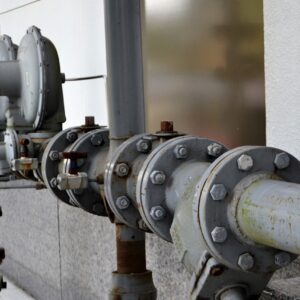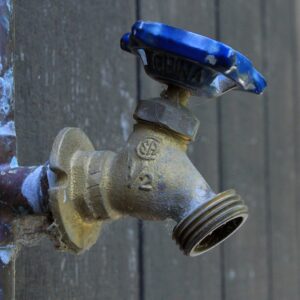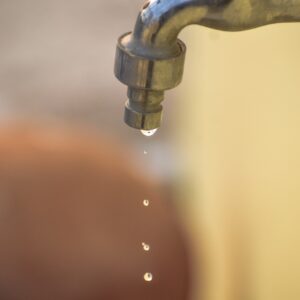Are you concerned about potential water damage in your home?
It’s important to regularly inspect your home for any signs of water damage to prevent costly repairs down the line.
In this article, we will guide you through the process of inspecting your home for water damage. By following these steps, you can identify any leaks, water stains, or other issues before they become major problems.
First, we’ll show you how to check for leaks and water stains throughout your home. This includes examining plumbing fixtures and appliances, as well as inspecting the foundation and basement for any signs of moisture.
Next, we’ll discuss how to assess the roof and gutters, as these areas are particularly prone to water damage.
Finally, we’ll guide you in evaluating the exterior of your home to ensure there are no vulnerabilities.
By taking the time to inspect your home for water damage, you can catch issues early and prevent them from escalating.
So let’s get started and protect your home from potential water damage!
Checking for Leaks and Water Stains
Now, let’s take a look at how you can easily spot leaks and water stains in your home.
Start by checking all the visible pipes for any signs of leakage, such as dripping or puddles of water. Don’t forget to inspect the water heater and any appliances that use water, like the dishwasher or washing machine.
Look for any discoloration or warping on walls, ceilings, or floors, as these could be indications of water damage. Pay close attention to areas near sinks, toilets, and showers, as these are common places for leaks to occur.
Additionally, check for any musty or moldy odors, as this could be a sign of hidden water damage. Remember, early detection is key to preventing further damage and costly repairs.
Examining Plumbing Fixtures and Appliances
Begin by checking the plumbing fixtures and appliances in your house to ensure they’re in tip-top shape. Start with the faucets in your kitchen and bathrooms. Turn on each faucet and check for any leaks or drips.
Inspect the pipes underneath the sinks for any signs of water damage or corrosion.
Next, move on to the toilets. Flush each toilet and listen for any unusual sounds or leaks. Look for any cracks or water stains around the base of the toilet as well.
Don’t forget to examine your dishwasher, washing machine, and water heater. Check for any leaks or rusting parts.
Lastly, inspect your showerheads and bathtub faucets for any leaks or mineral build-up.
Taking the time to examine these fixtures and appliances can help prevent water damage and costly repairs in the future.
Inspecting the Foundation and Basement
Take a moment to explore the foundation and basement of your house, and you’ll discover hidden spaces filled with potential and charm.
Begin by inspecting the foundation for any cracks or signs of water damage. Look for leaks or dampness on the walls, as well as any mold or mildew growth.
Check the basement floor for any pooling water or moisture. Don’t forget to examine the windows and doors for any gaps or cracks that may allow water to seep in.
Inspect the sump pump and ensure it’s working properly. Look for any signs of water stains or damage on the walls or ceiling.
Lastly, check the plumbing pipes and connections for any leaks or corrosion. By thoroughly inspecting the foundation and basement, you can catch any water damage early and prevent further issues.
Assessing the Roof and Gutters
Start by looking up at your roof and gutters to ensure they’re in good condition and free from any potential issues.
Inspect the roof for missing or damaged shingles, as well as any signs of sagging or water pooling. Pay attention to areas around chimneys, vents, and skylights, as they’re common sources of leaks. If you notice any problems, such as cracked or deteriorated shingles, it’s important to address them promptly to prevent water damage.
Next, move on to the gutters and downspouts. Make sure they’re securely attached to the house and free from debris. Clogged gutters can cause water to overflow, leading to water damage to the roof, walls, and foundation. Regularly cleaning and maintaining your gutters will help prevent these issues and keep your home protected from water damage.
Evaluating the Exterior of Your Home
Step outside and marvel at the beautiful exterior of your home, taking in the impeccable craftsmanship and stunning curb appeal that fills you with a sense of pride and joy.
Now, it’s time to evaluate the exterior for any signs of water damage. Begin by closely inspecting the walls for any cracks, peeling paint, or discoloration, as these could indicate water intrusion. Pay attention to the window frames and doorways as well, checking for any gaps or rotting wood.
Next, examine the foundation for any cracks or water stains, as these may suggest water leakage. Additionally, inspect the siding and trim for any signs of warping, mold growth, or loose panels.

Finally, check the outdoor faucets, sprinkler systems, and drainage systems to ensure they’re functioning properly. Taking these steps will help you identify and address any potential water damage issues before they worsen.
Conclusion
In conclusion, it’s important for you to regularly inspect your home for water damage. By checking for leaks and water stains, examining plumbing fixtures and appliances, inspecting the foundation and basement, assessing the roof and gutters, and evaluating the exterior of your home, you can identify any potential issues early on and take the necessary steps to prevent further damage.
Remember, staying proactive and addressing water damage promptly can save you from costly repairs in the long run. So, make it a priority to inspect your home regularly and keep it safe and dry.




